Michelangelo Poletti’s collection, with an excerpt of eighty-five pieces belonging to that collection from the Emilian area and dated between the late 15th century and the 18th century, stands out as a unicum on a private but also national level. Displayed for the first time to the general public in the exhibition La Quadreria del castello (Bologna, Palazzo Fava, from April 7 to July 24, 2022, curated by Angelo Mazza and presented by Genus Bononiae - Musei nella città), it unfolds through the rooms of the precious Renaissance Palazzo Fava, defined by Roberto Longhi as “a historical novel imagined on the great earlier painting, capable of transcending the pockets of mannerism and communicating directly at the opening not of a book, but of a window.” The copious and passionate collection of the Bergamasque entrepreneur and president of the Academy of Fine Arts in Bologna, housed in the rooms of his residence (since 1995) located in the Castle of San Martino in Soverzano, between Budrio and Minerbio, founded by the Ariosti family during the 14th century, consists of 530 works purchased from Italian, European and American antique galleries and auctions.
The collection, which began about forty years ago with a Portrait of a Man belonging to the Carracci circle purchased by restorer Maricetta Parlatore, was immediately enriched with small masterpieces including a very delicate Penitent Magdalene with angel holding the crown of thorns by Marcantonio Franceschini, executed for Count Leoni of Piacenza, the first and only painting to adorn the castle walls on the day of its inauguration, and Salome with the head of Baptist by Pietro Ricchi, which sanctioned his meeting with art historian Angelo Mazza, whose role as advisor and creator of Dr. Poletti’s personal picture gallery would prove fundamental in his training and development. As fundamental will be the advice that will accompany him in the years to follow, dispensed by Parlatore herself when he was just 27 years old: “go to the Pinacoteca, refine your eyes, perfect your taste, there you will find the beautiful; look at the light, observe the shadows, admire the color, but above all let yourself be penetrated by the message that the artist has imprinted there.”
Poletti’s collection is characterized by being " open,“ in the dual meaning of being ”in fieri" and available for sharing in a patronage perspective: this is evidenced by a number of special openings at the castle to groups, cultural associations, students or insiders, and the willingness to lend works within major exhibitions (recall in this regard the Eternal Father in flight with angels, a 16th-century lunette that originally surmounted the altarpiece of the church of Sant’Agostino in Cesena by Girolamo Genda, on display in 2019 on the occasion of the exhibition Raphael and the Friends of Urbino at the Ducal Palace).
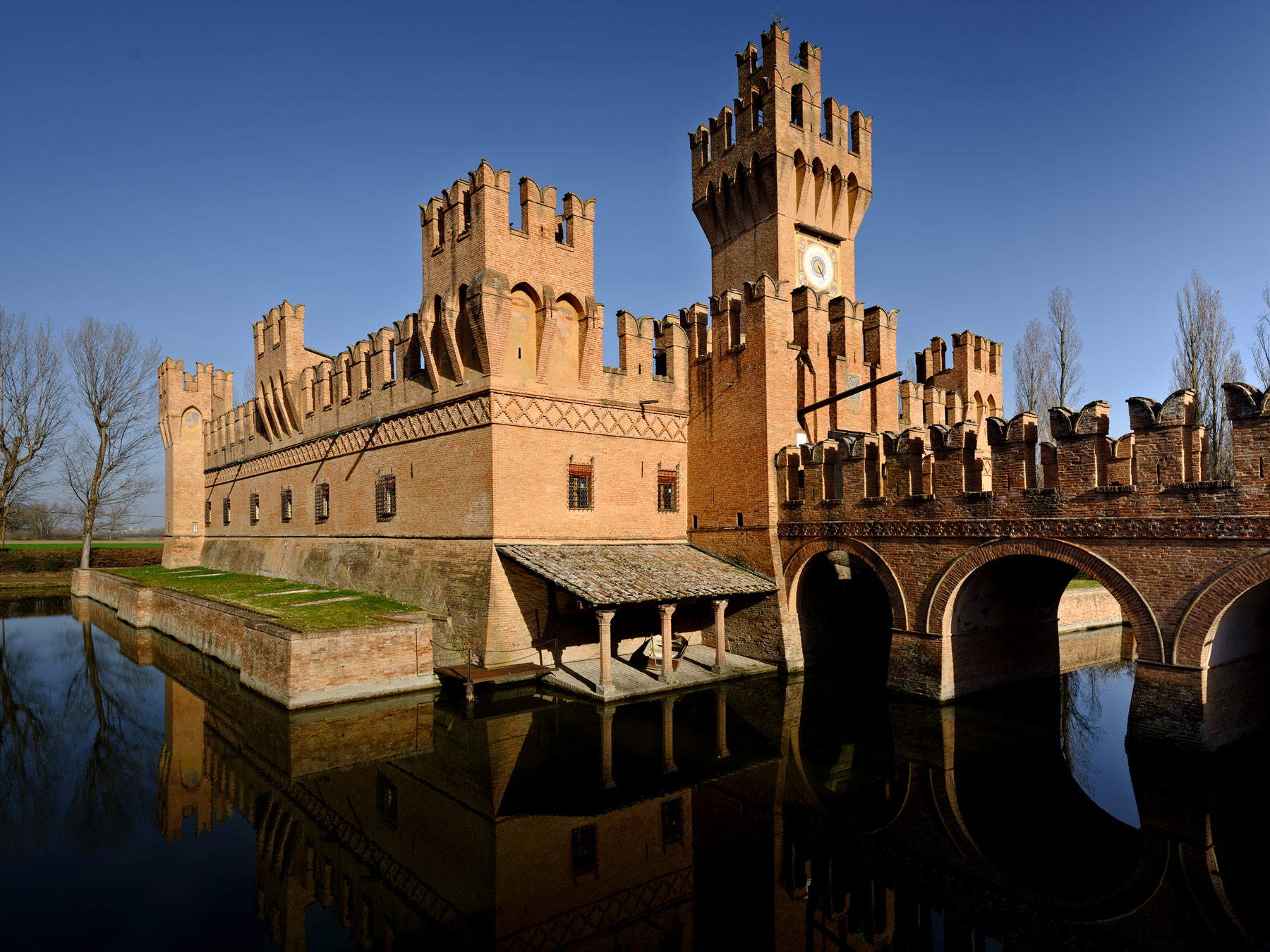
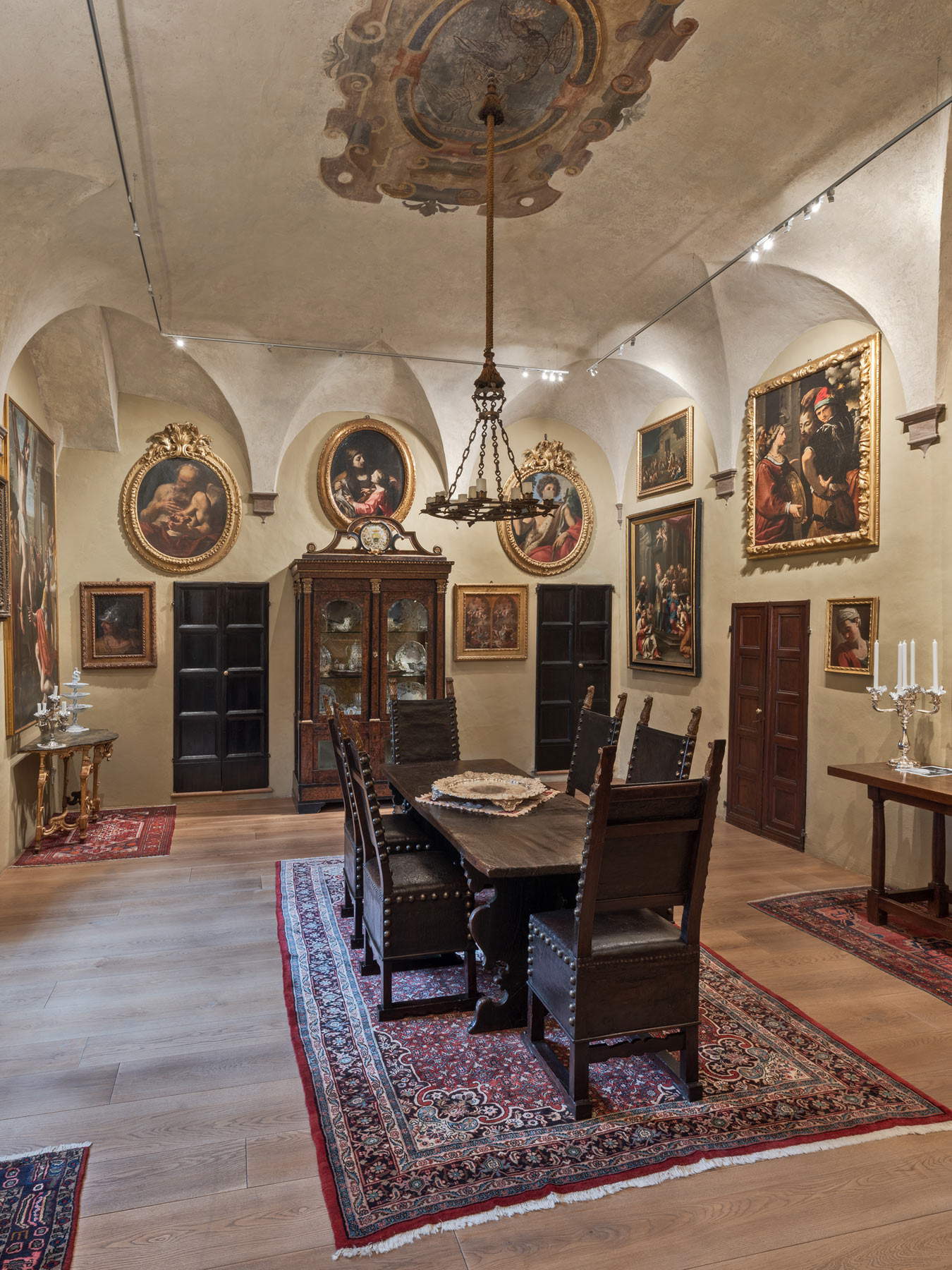


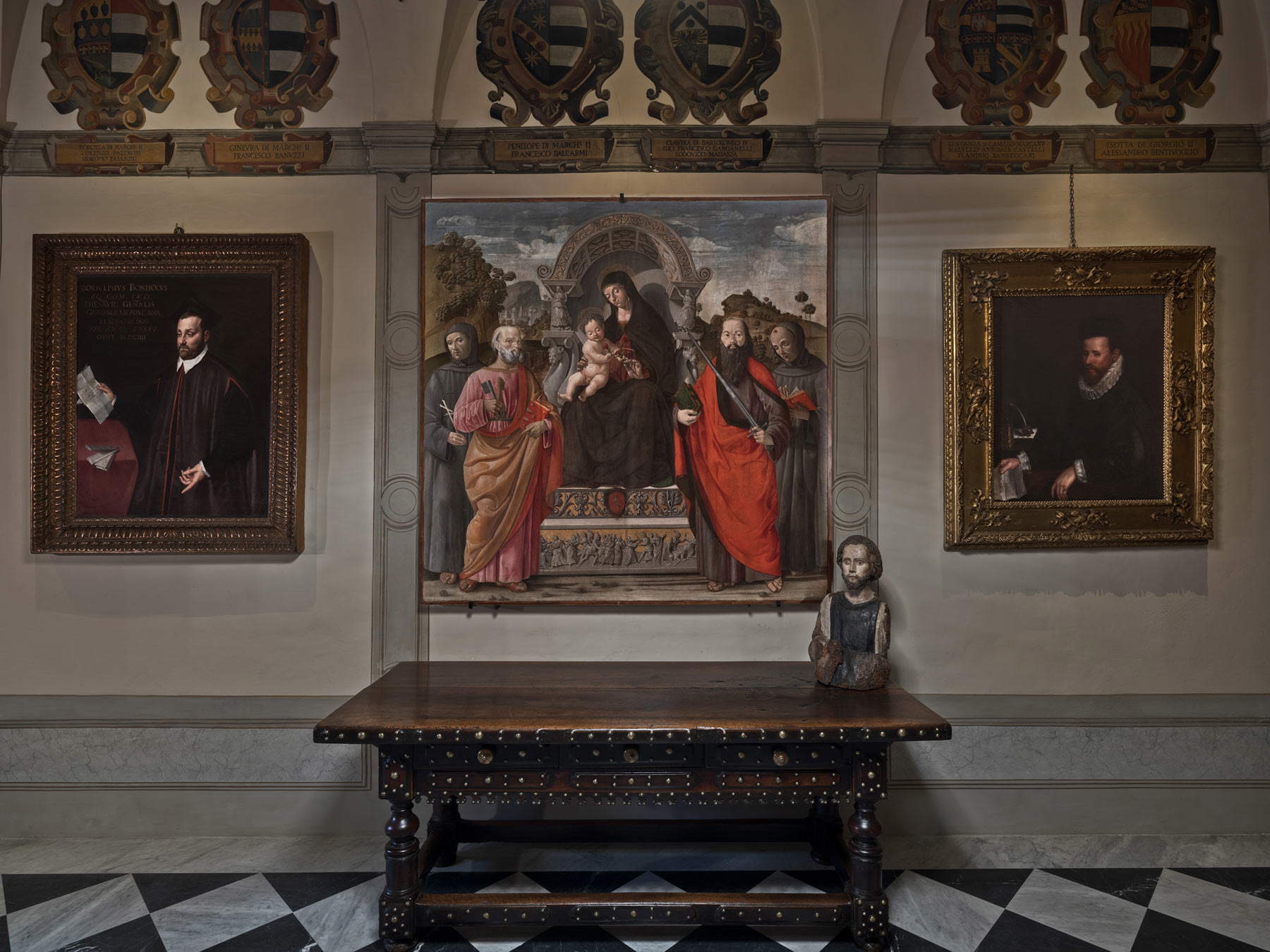
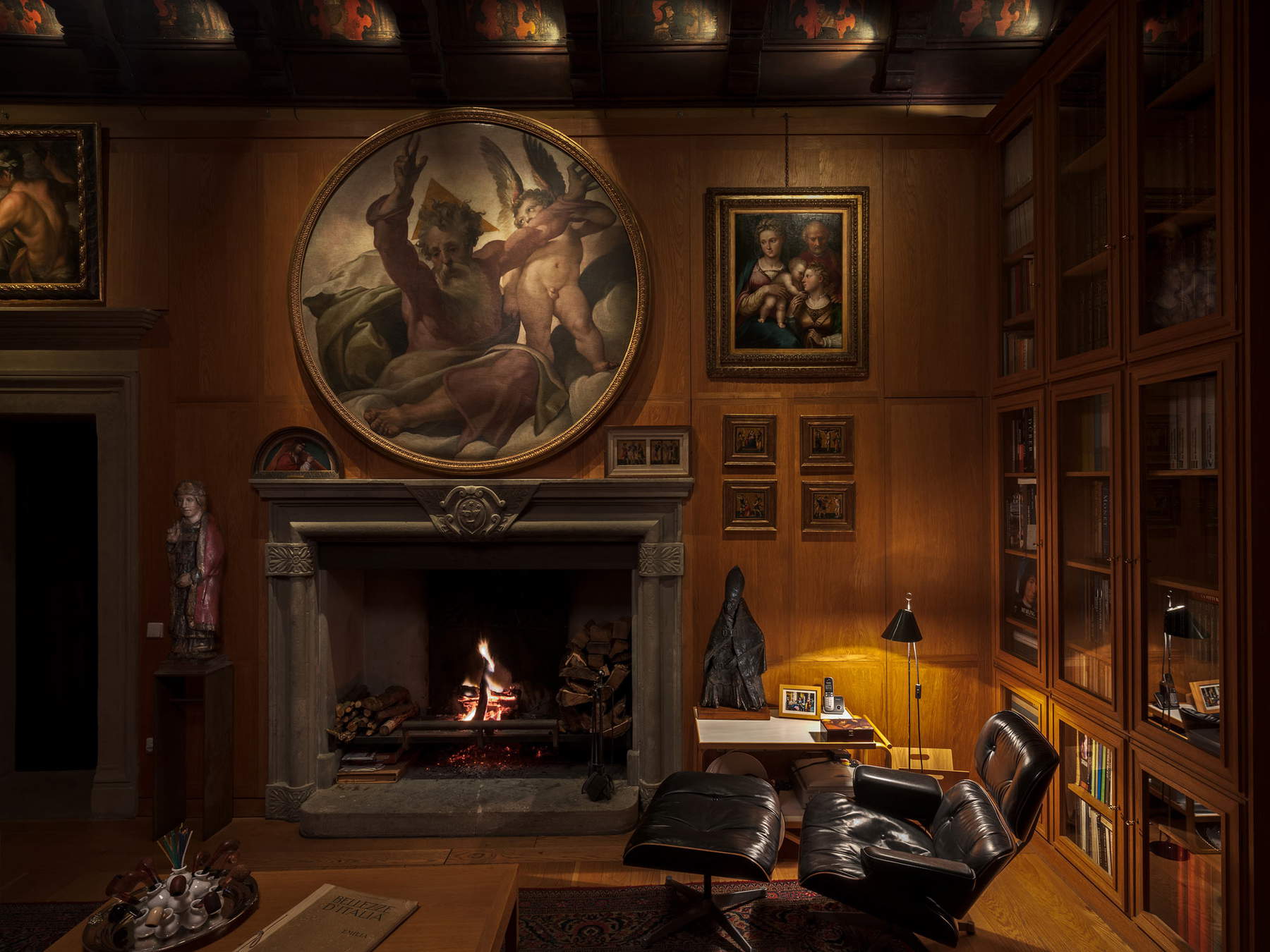
The collection has the merit of having also given voice to some lesser-known painters protected by the Superintendency who are talented and of character, left out of the international trade, enhanced undervalued paintings ousted from the market and from major exhibitions, and undertaken, at the same time, careful restoration and philological work. The latter aspect has allowed some dismembered or dispersed works to be reassembled; emblematic is the oil on canvas depicting the Fainting of Portia assisted by ahandmaiden by Lorenzo Pasinelli, which appears to have been cut into three parts in 1669 by an unhappy Count Fava who had been waiting for it to be finished, and which returns to be joined by the two recently identified minor fragments that originally composed it, namely the Bust of a Handmaid and the Bust of a Soldier.
The Quadreria conserves within it some works subject to ministerial constraint such as the lunette depicting the Eternal Blessing Father with cherubs by Marco Palmezzano, the panel with the Presentation of the Child in the Temple by Antonio Pirri, and Bartolomeo Cesi’s canvas with Hannibal as a boy swears eternal hatred against the Romans from the senatorial Palazzo Albergati on Via Saragozza and where the content message is founded with high figurative virtuosity. This ministerial obligation, which limits the owner in the exercise of the right of ownership by preventing their export and making him responsible for their good preservation, did not restrain Michelangelo Poletti from acquiring them but on the contrary seems to have spurred him on, considering it an added value. Another noteworthy aspect that characterizes this collection is that of having brought paintings back to Italy through international auctions: examples include Camillo Procaccini ’s Sacrifice of Isaac and Elisabetta Sirani ’s Portrait of a Child with Vase of Flowers, both acquired at a Sotheby’s auction in London, and Donato Creti ’s Head of a Soldier with Helmet and Command Staff, which was hammered out at the Dorotheum auction house in Vienna.
While boasting an enviable corpus of pieces predominantly from the Emilia-Romagna area dating from the late fifteenth to the early nineteenth century, Michelangelo Poletti’s picture gallery counts within it works (in almost all of cases of certain historical traceability) executed by painters from the Veneto, Lombardy, Tuscany , Genoa, Naples, so-called “itinerant ”and belonging to religious orders.
Within theEmilia-Romagna area there is a conspicuous presence of works executed by artists assiduous frequenters of the Carracci school, in turn collected by Count Alessandro Fava, such as Lorenzo Pasinelli, Donato Creti, Ercole Graziani, and Aureliano Milani (Giulio Cesare Malvasia recounts that the count had the hall frescoed by the Carracci arranged “a comfortable movable bridge, for the benefit of the studious youth, who, corresponding to such courteous magnificence, nol lasciare mai voto”). Among these paintings are the Sleeping Cupid disarmed by the nymphs , remembered by Giampietro Zanotti as “one of the most beautiful that can come out of any great painter,” and Rebecca at the well, quenching Elezer’s thirst (dated 1665), both by Lorenzo Pasinelli, who founded a school in Palazzo Fava between 1674 and 1675. a school; the San Girolamo penitente, an oil on canvas dated 1690 by the barely 19-year-old pupil Donato Creti with a dedication to his patron Alessandro Fava; and the Bacco, a rare terracotta sculpture made by Donato Creti and signed with his initials.
Within the collection there is no shortage of some of what can be considered key female figures in the history of Bolognese art, such as Lucia Casalini, Lavinia Fontana (daughter of the famous Prospero Fontana, much sought after by all those important people who aspired to have a portrait that would emphasize their social and professional position), Elisabetta Sirani, present, in addition to the aforementioned Child Portrait, also with an intense Allegorical Figure of Philosophy executed at a young age and inspired by Petrarchan verses.

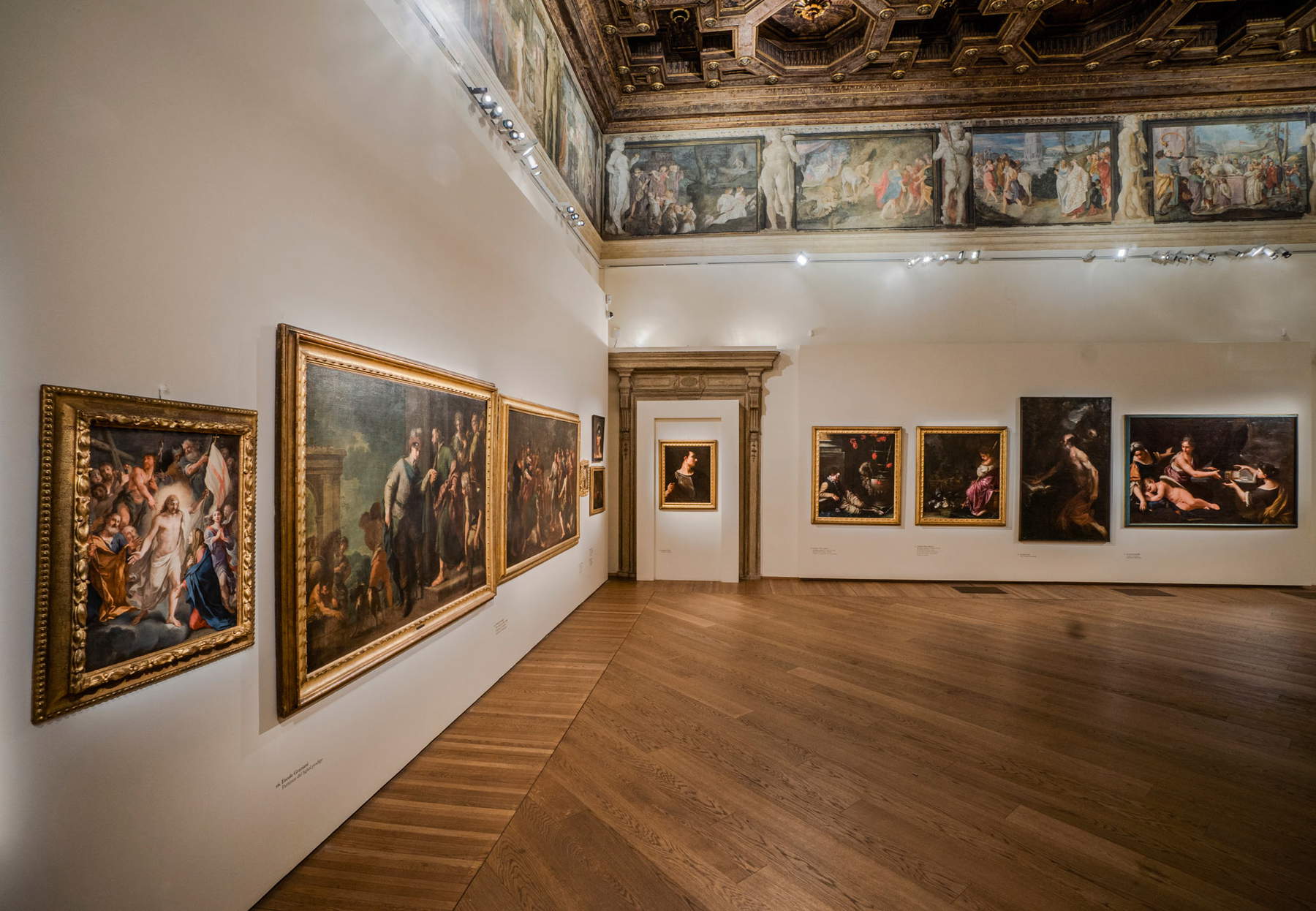
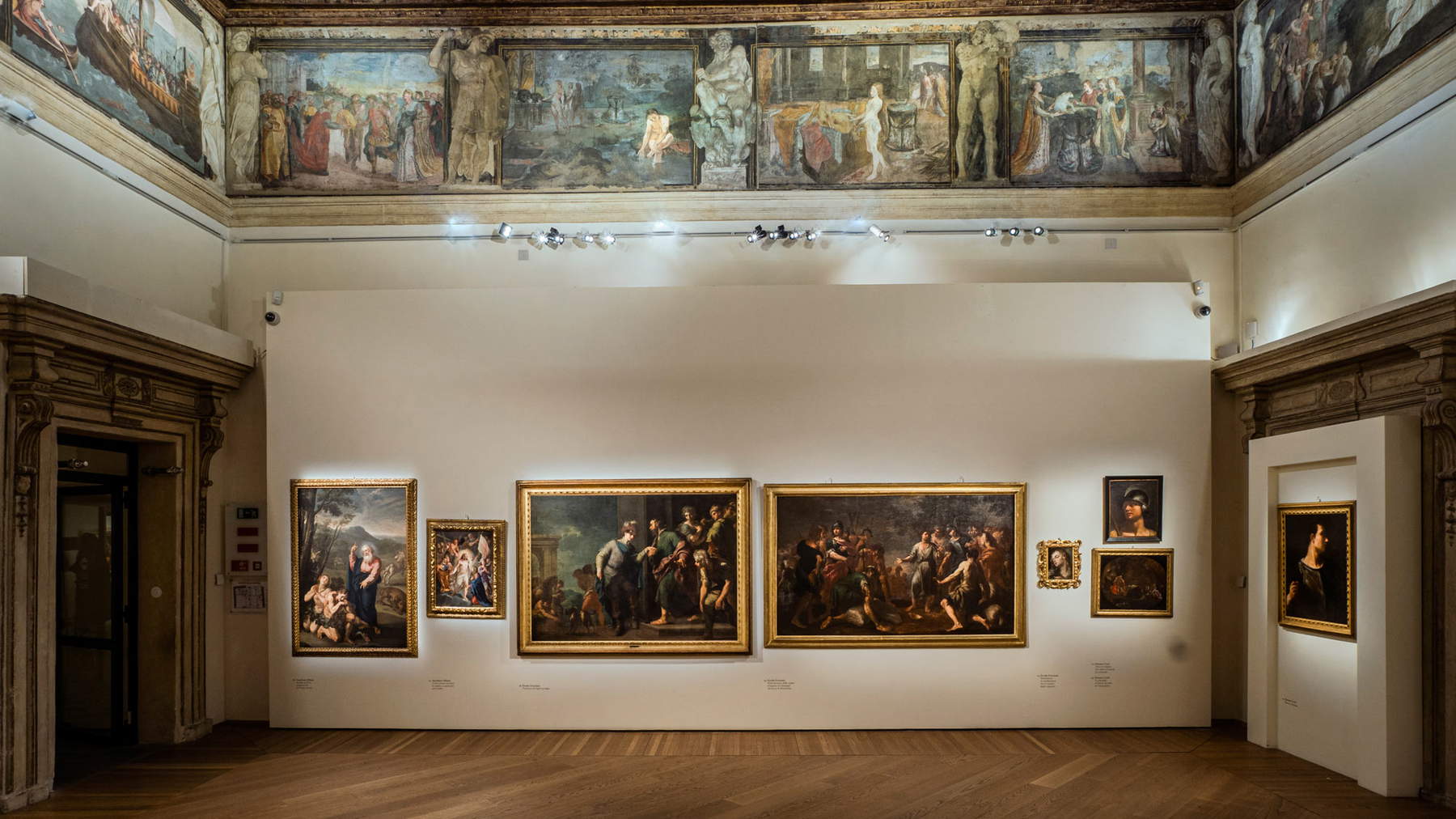


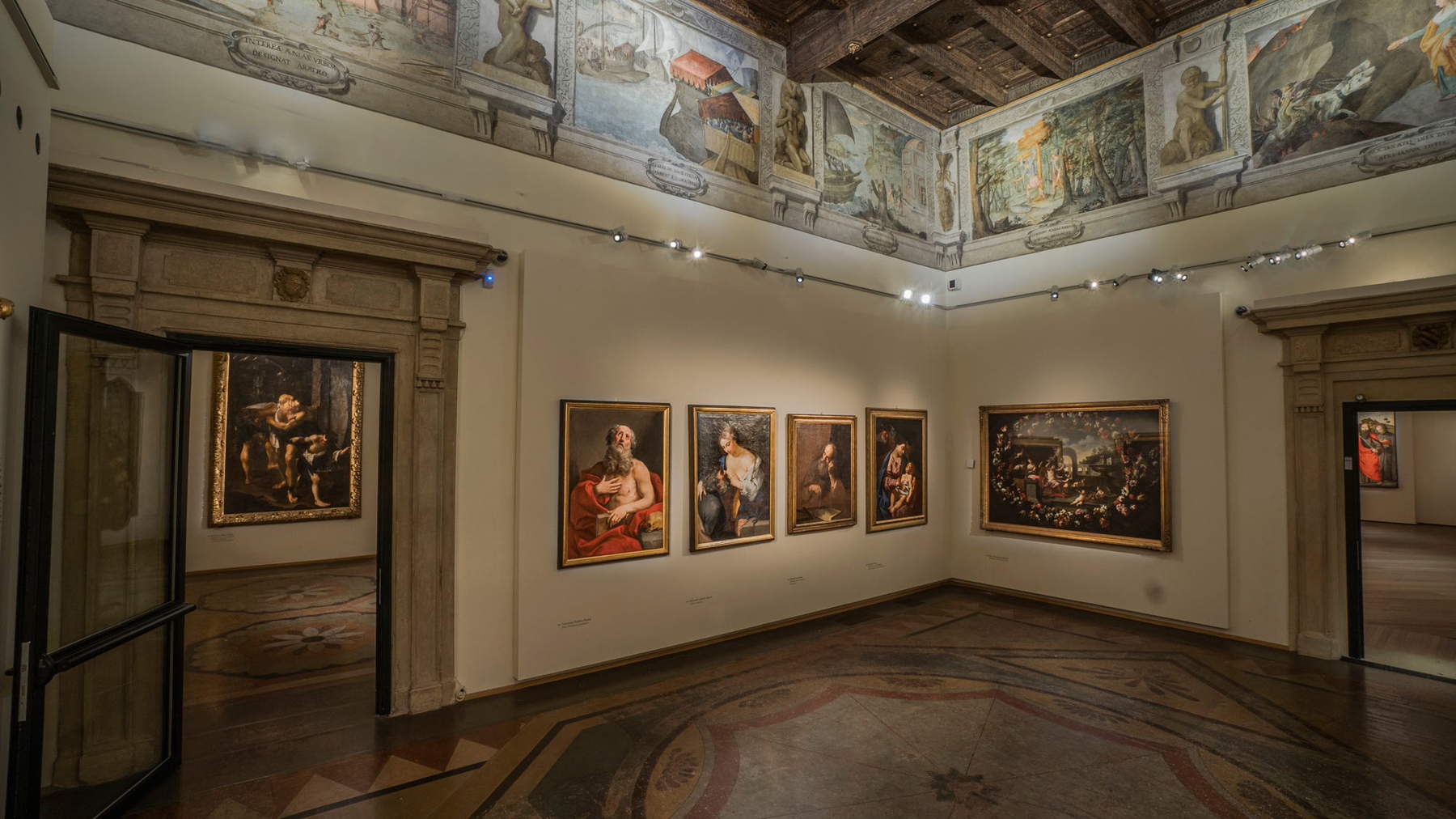
A very interesting piece from an art-historical point of view, pursued for a long time by Poletti before he succeeded in acquiring it, is the large altarpiece of the Madonna and Child Enthroned and Saints Peter, Paul, Francis d’Assissi and Anthony of Padua from the 15th century attributed to the Forlì Maestro dei Baldraccani (active in the years of Melozzo and Caterina Sforza), mentioned in a famous article by Federico Zeri that appeared in Paragone magazine in 1986 in which the scholar claimed to have studied it before 1973 in the Muti-Bussi house in Rome. A painting with a powerful compositional flair that is influenced by Flemish influences perhaps not direct but filtered through Tuscan artists such as Ghirlandaio and Piero di Cosimo, it features a Madonna seated on a highly inventive throne adorned with capitals carved with allegorical figures and placed atop a double decorated step, flanked in the foreground by Saints Peter and Paul and two Franciscan saints in the background (one of whom is most likely identifiable as St. Francis) and therefore probably from a church belonging to that order.
In the sphere of the Bolognese sixteenth century, the collection gathers works by Camillo Procaccini, by Denijs Calvaert, a painter from Antwerp who settled in Bologna, and by Bartolomeo Passerotti, whose circular painting, located in the library of the Castle, the Eternal Blessing Father with an angel, surmounted by the golden triangular nimbus symbolizing the Trinitarian mystery, in which it is impossible not to discern the Michelangelo component, most likely to be attributed to a pupil of Raphael’s school, Giovan Francesco Penni known as il Fattore.
Among seventeenth- and eighteenth-century painters, the Quadreria includes works by Giovanni Andrea Donducci known as il Mastelletta (of whom we mention two works whose composition is of great narrative-theatrical impact: Christ and theAdulteress, a sketch for a three-meter painting owned by Giustiniani, and The Return of the Prodigal Son, which is influenced by the school of Guido Reni), Giovanni Andrea Sirani and Simone Cantarini (intense his unfinished Philosopher with Compass, probably depicting Euclid, reworked during the 19th century) and by Francesco Monti, Giuseppe Marchesi, Nicola Bertuzzi and Giuseppe Varotti, Ubaldo and Gaetano Gandolfi (belonging to the Bolognese barocchetto), as well as of Giovanni Maria Viani and son, Carlo Cignani and his pupil Marcantonio Franceschini. Some of these would be the protagonists of the nascent Accademia Clementina of Bologna supported by Pope Clement XI, who, together with Count Pietro Ercole Fava, would be among its founders and who would elect Palazzo Fava as the seat of the first organizational meetings.
Dating from 1769 is Jacopo Alessandro Calvi ’s preparatory model (recently donated to the Fondazione Carisbo) of the work San Francesco implores the Madonna’s protection over pilgrims, installed at the church of Santa Maria della Vita next to the Lamentation over the Dead Christ by Niccolò dell’Arca, originally made for the Hospital of St. Francis, which stood at the beginning of Via San Felice, while the model Isabella of Aragon pleads for protection to Charles VIII on a visit to the dying duke, executed by Pelagio Palagi, is placed at the turn of the eighteenth and nineteenth centuries.

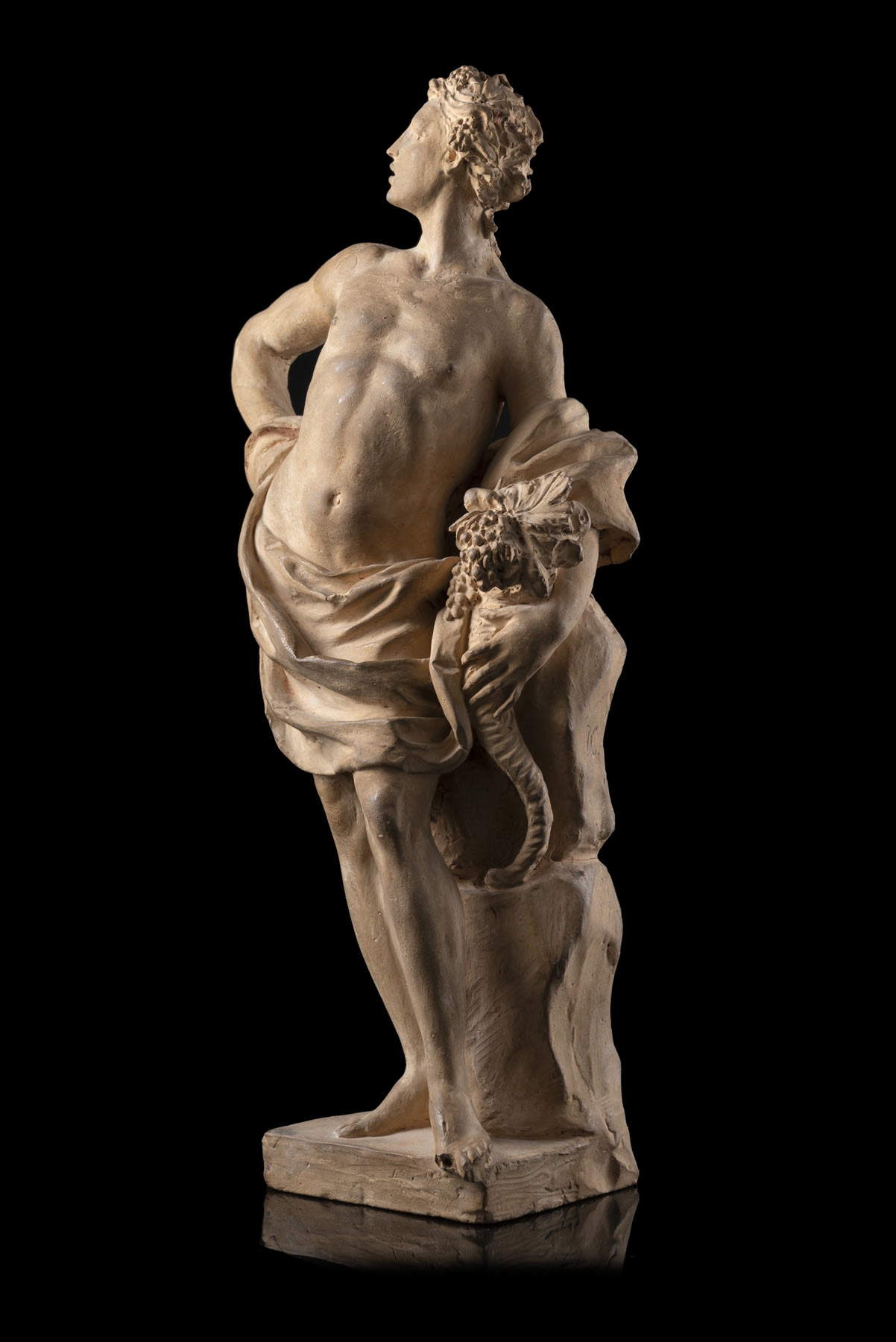
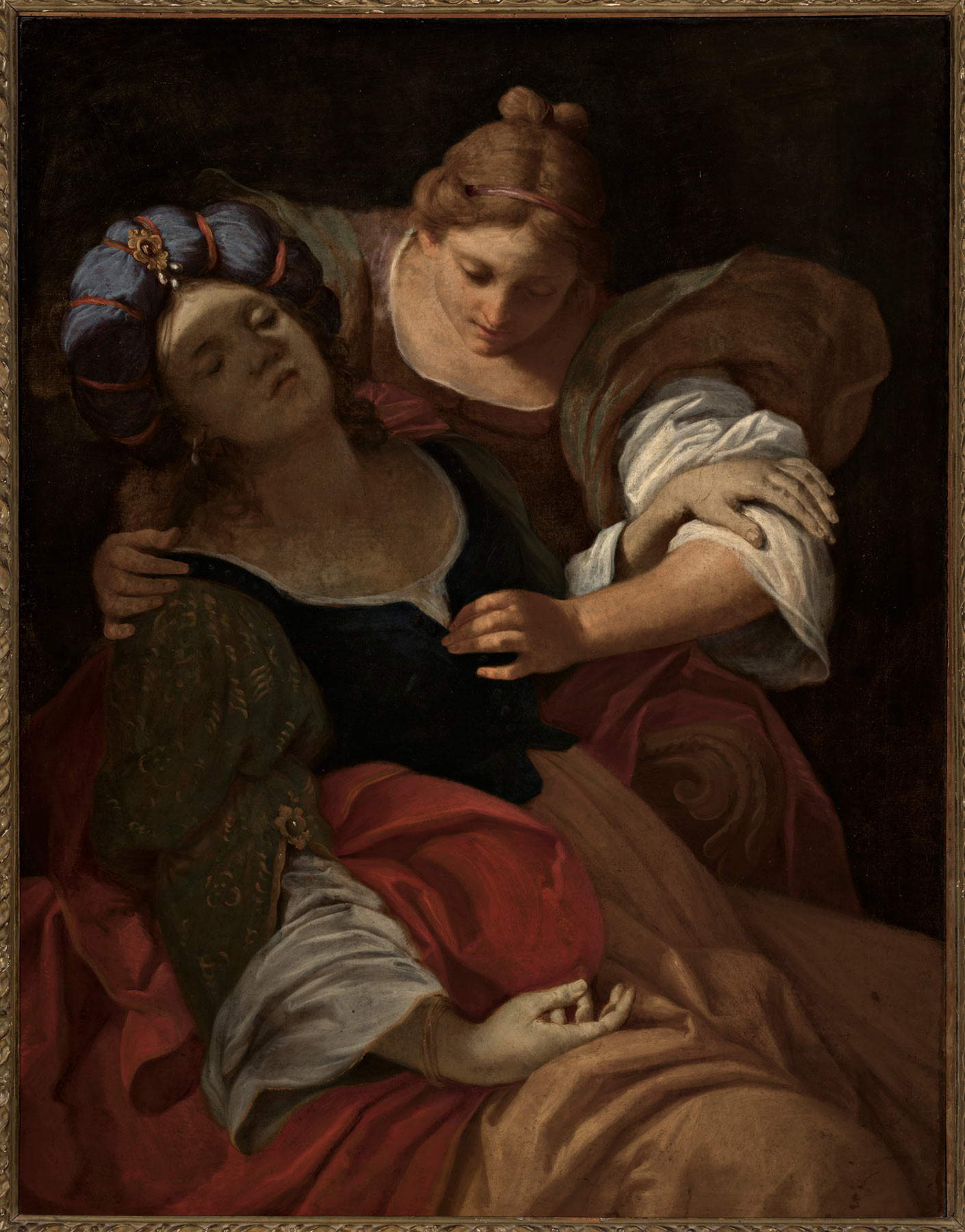
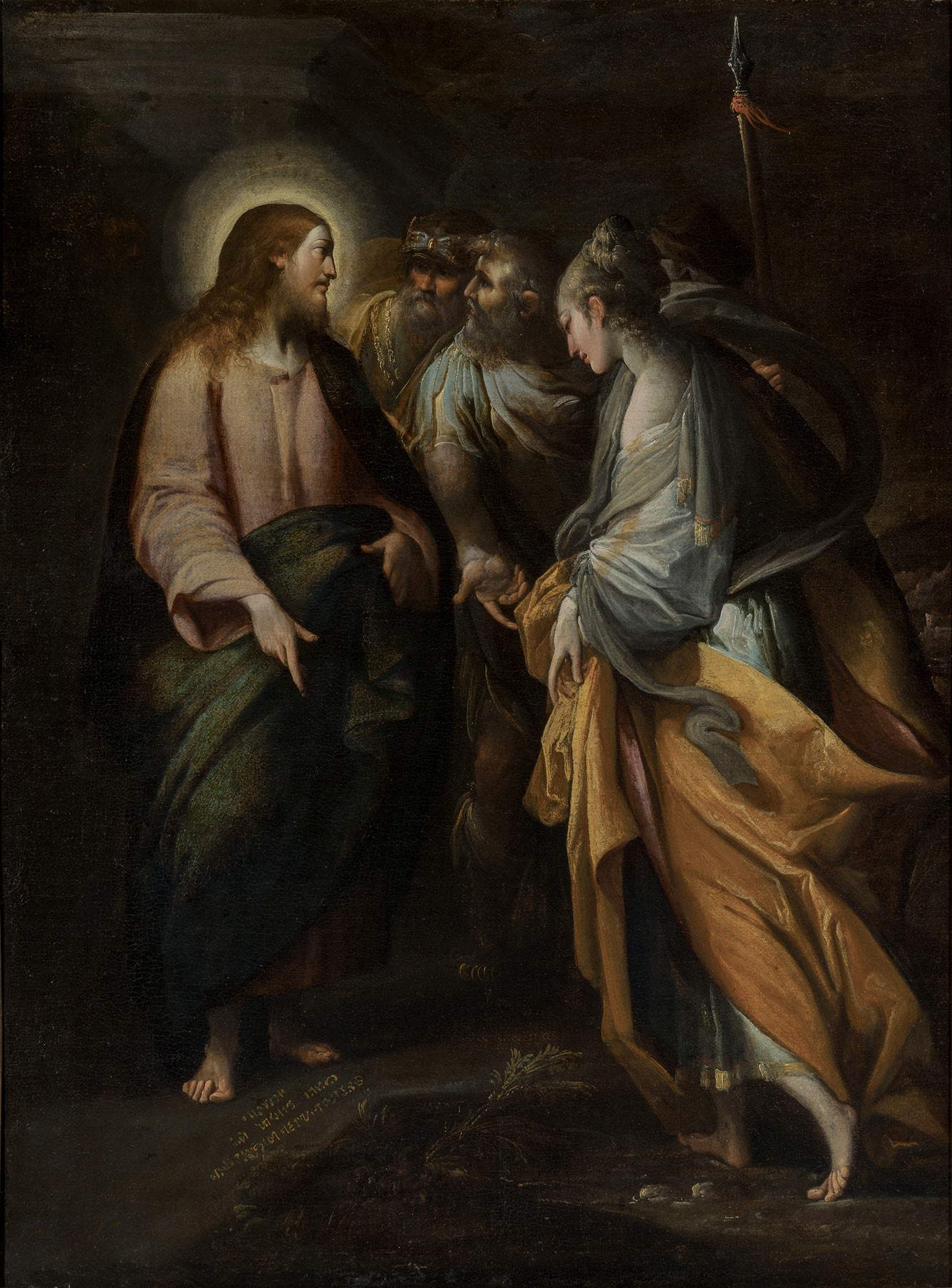
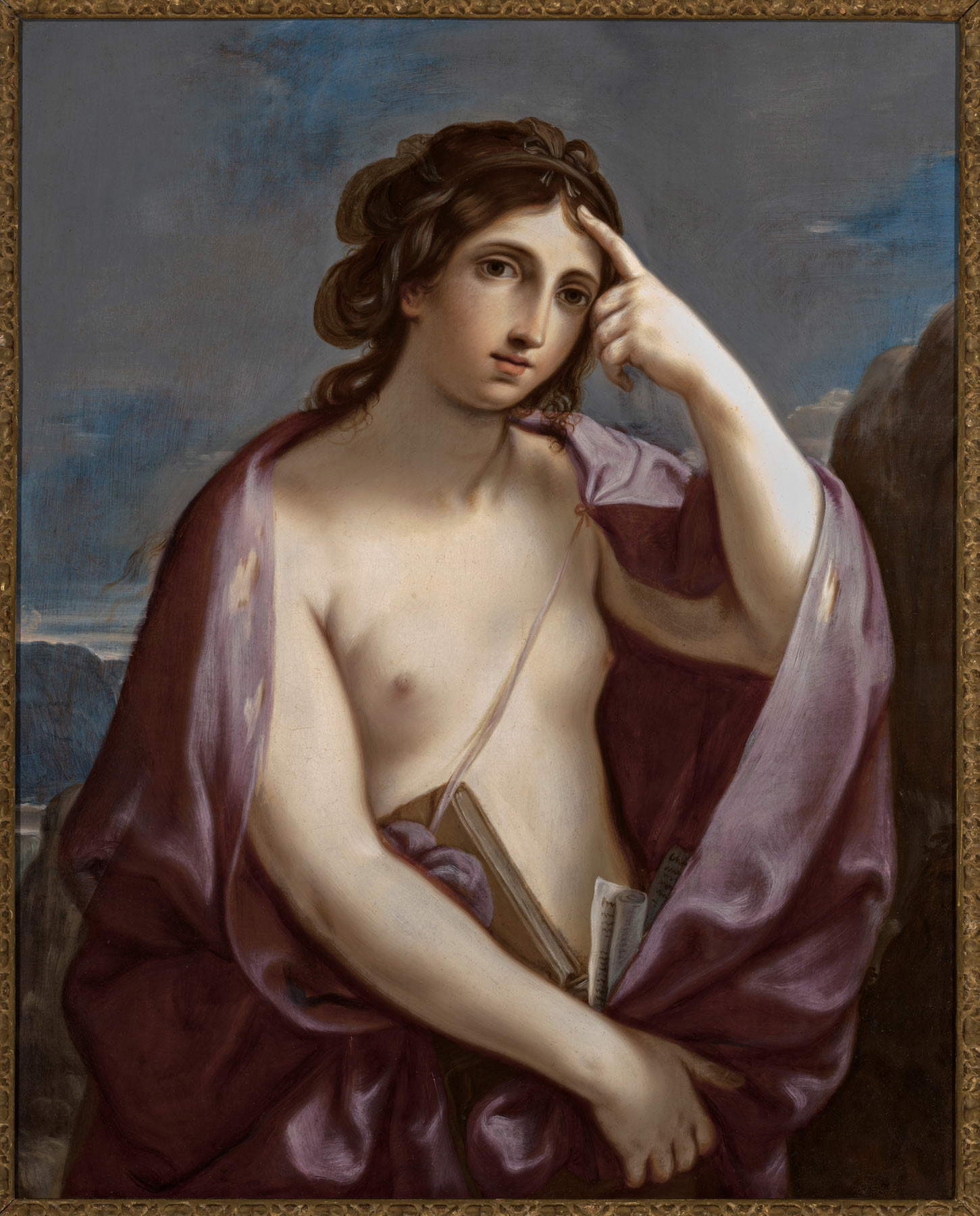

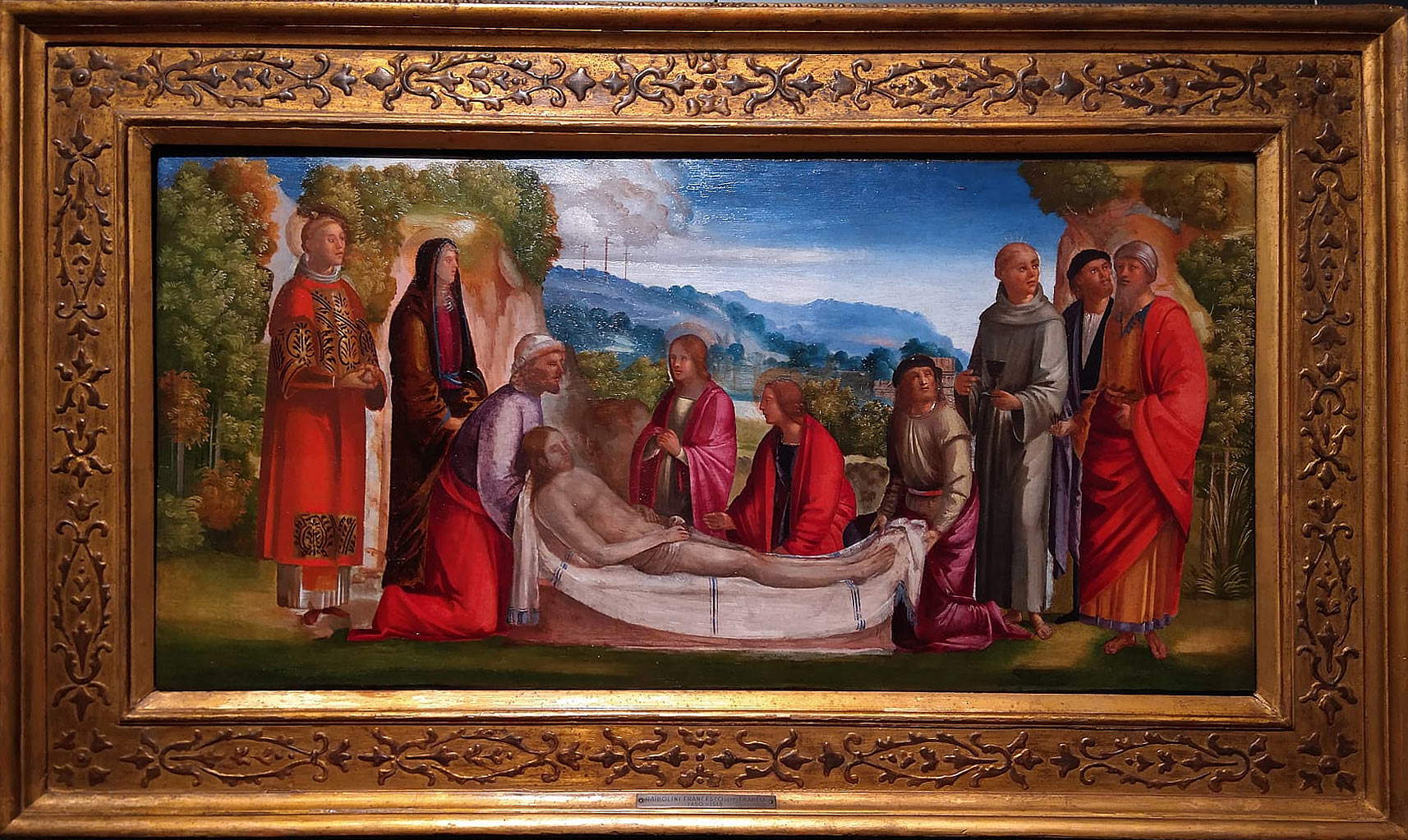
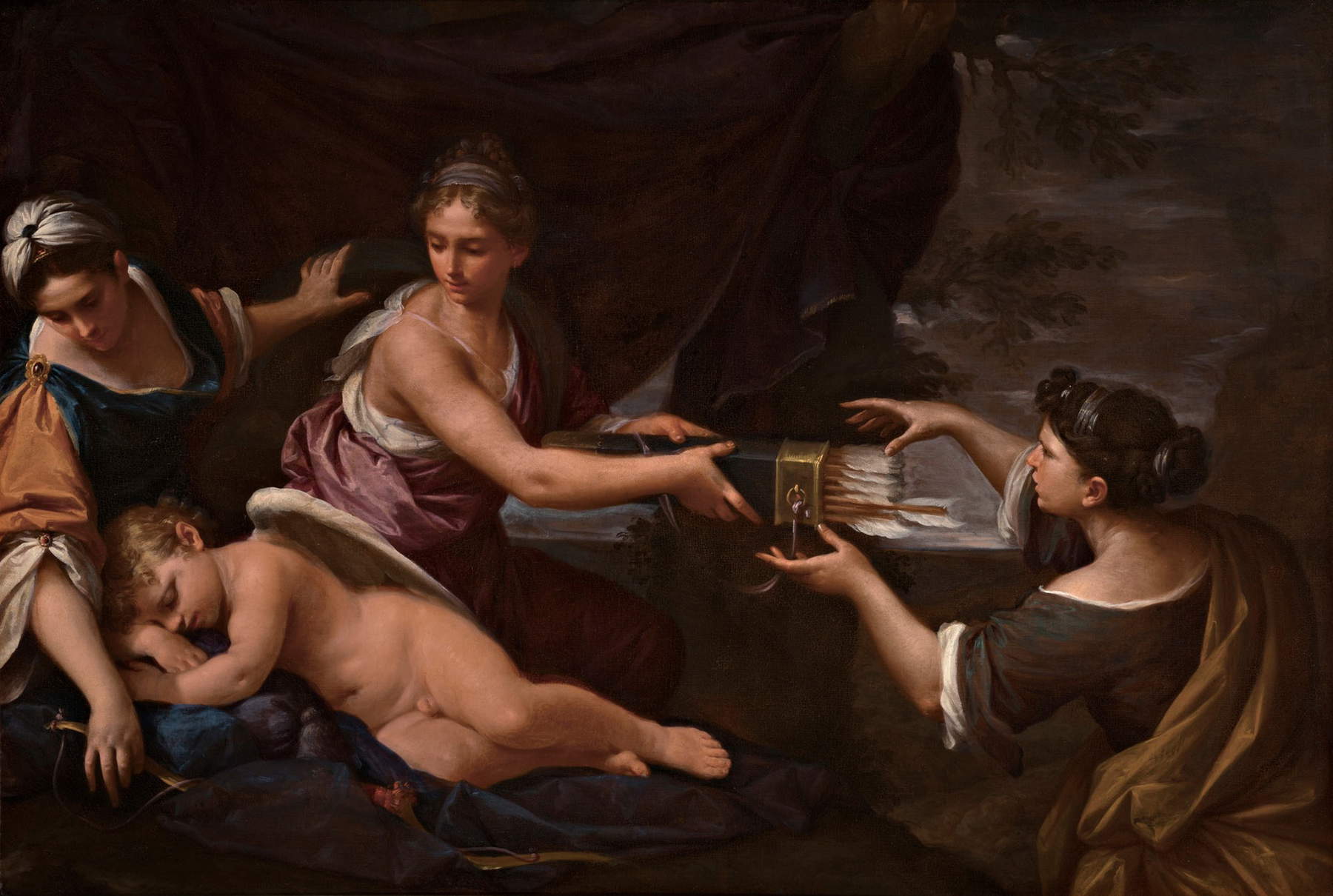
Figurative examples from the Veneto area include Moses Making the Waters Spring by Pietro de Marascalchi known as lo Spada, a mannerist active in Belluno; the Visitation by Antonio Bellucci, a model for the altarpiece in the Salesian church in Vienna; and a pair of ovals attributed to the Frenchman Louis Dorigny active mainly in Verona (theAllegory of Right Judgment and theAllegory of Concord) placed in the ballroom of the Cà Tron in Venice, on the Grand Canal.
Belonging to theLombard area we point out some works such as theAdoration of the Shepherds in the Presence of St. Luke by Vimercati, one of the greatest exponents of Lombard Baroque, the Martyrdom of St. Agnes and a Charity by Giulio Cesare Procaccini; while among the Tuscans we mention theAllegory of Prudence and Justice, a Crucifixion and a Resurrection by Francesco Conti, and the panel with Saint Catherine of Alexandria by Raffaellino del Colle.
Notable among the Genoese are the six imposing canvases by Antonio Lagorio known as the Genovesino (the same nickname as the better-known Luigi Miradori) from Palazzo Grassi, whose style mixes that of Valerio Castello’s revisited Baroque staff with the late Mannerism of Parmigianino. Among the Neapolitans are Nunzio Rossi’s canvas with Saint Cecilia, the Portrait of Diego Pignattelli d’Aragona conceived on the occasion of his elevation to the Order of the Golden Fleece and flanked by an African servant (modeled after Van Dyck) by Francesco Solimena whose model is housed in the Metropolitan Museum in New York.
Among those itinerant, non-stable painters, Johannes Hispanus with the Deposition of the Body of Christ in the Sepulcher and Saints (an artist long studied by Federico Zeri, very fascinating, with multiple pictorial influences ranging from Perugino to Pinturicchio, Bellini to Giorgione, Dosso Dossi to Amico Aspertini) and Filippo da Verona with the Madonna and Child in Landscape stand out.
Painters belonging to religious orders include the Capuchin Paolo Piazza with a Presentation of the Child in the Temple, Fra’ Semplice da Verona with the Madonna and Child and Saint Felice of Cantalice, and Sister Orsola Maddalena Caccia (who distinguished herself by a considerable production of altarpieces and still lifes) with a Concert of Five Angels.
Concluding the Michelangelo Poletti collection: an artist of the 20th century, Carlo Corsi; a painter of light, protagonist together with Protti, Romagnoli, Fioresi and Pizzirani of the so-called “Moderate Bolognese avant-garde ”and present with works, spanning his entire artistic career, whose favorite subject is daily life and the female figure and ranging from the charcoals of the Academy period, to watercolors, oils up to abstract collages and new experiments.
Warning: the translation into English of the original Italian article was created using automatic tools. We undertake to review all articles, but we do not guarantee the total absence of inaccuracies in the translation due to the program. You can find the original by clicking on the ITA button. If you find any mistake,please contact us.